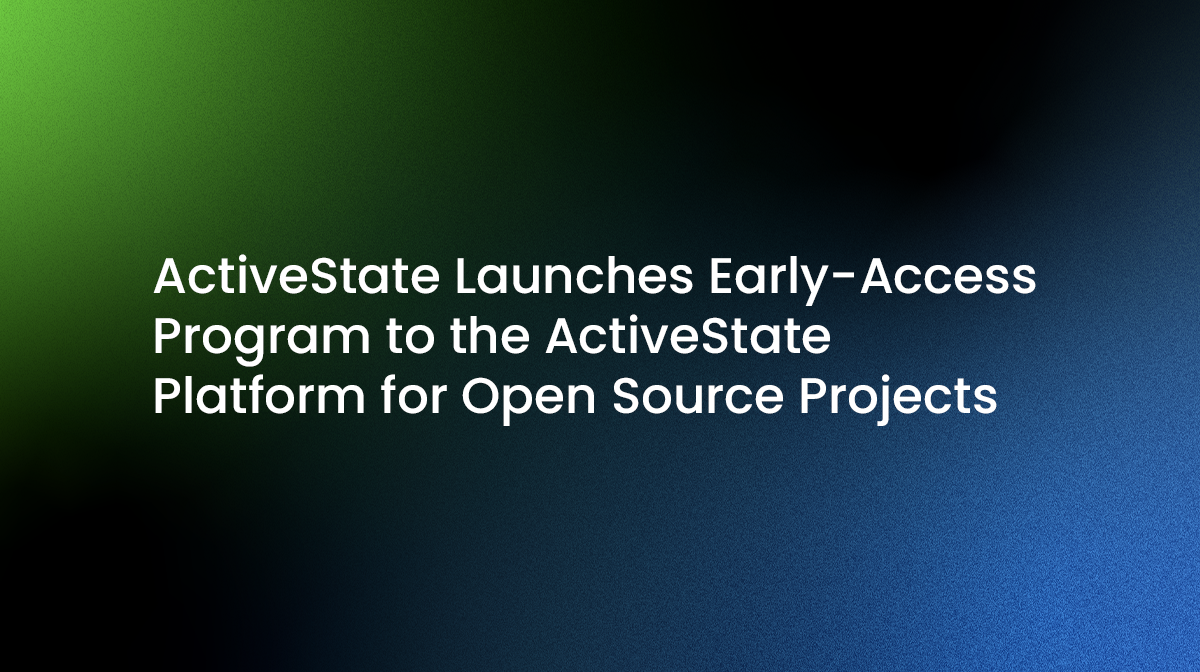Free, cross-platform open source language build services to help open source projects reach more users and reduce project maintenance overhead.
VANCOUVER, British Columbia – May 12, 2020 –Today ActiveState announced a free early-access program for qualifying open source projects to the ActiveState Platform. The early-access program is a prelude to offering free access to the Platform for all qualified open source projects. The program lets Python-based projects easily create and share smaller and more secure Python distributions for multiple operating systems using the ActiveState Platform. ActiveState will choose a small set of projects to participate in the early-access program; information on the application process is available at https://www.activestate.com//open-source-early-access-program.
Click to Tweet: Know a Python open source project that needs an easy way to build and ship cross-platform runtimes? Maybe the ActiveState Open Source Early Access Program can help: https://ctt.ac/yUzac+ #opensource #python
Distributions created as part of the program will be pure open source. The program will also give the projects access to all of the open source language automation features on the ActiveState Platform, including integration with CI/CD tools, shared secrets, cross-platform scripting, automated dependency resolution and environment setup with a single command.
The ActiveState Platform provides a build engineering service that developers can call on-demand to automatically build a custom runtime from source (i.e., including just the language and packages required by their project). The ActiveState Platform catalog includes tens of thousands of Python (as well as Perl and Tcl) packages, many of which have ActiveState-created and maintained recipes that ensure they can be built for multiple platforms, and packaged for deployment on most popular operating systems.
The ActiveState Platform exemplifies a new emerging platform category that supports multi-platform, multi-language builds so that organizations don’t have to create and manage their own build infrastructure that’s often fragile and expensive to maintain.
Open source projects and project contributors will gain from the program in these ways:
- Projects benefit by expanding their potential user and contributor pool to include Windows, macOS and Linux users – one or more operating systems they may not normally build for. The ActiveState Platform dramatically lowers the barrier to entry for these platforms by effectively automating the runtime build for their project.
- Project contributors benefit from fast and easy onboarding, so they can spend more time contributing code and less time configuring their development environment for the project. The ActiveState Platform’s CLI, the State Tool, lets contributors install the development environment for the project with a single command, effectively eliminating the tedious and error-prone setup process.
Bart Copeland, CEO and president, ActiveState, said: “The early-access program lets open-source projects use the ActiveState Platform to spend more of their time advancing the project and less time on project maintenance. As a company, we rely heavily on the open source community and we’re looking forward to giving back in yet another meaningful and scalable way.”
About ActiveState
ActiveState helps enterprises scale securely with open source languages and gives developers the kinds of tools they love to use. More than 2 million developers and 97% of Fortune 1,000 enterprises use ActiveState to support mission-critical systems and speed up software development while enhancing oversight and increasing quality.
Media Contact:
Zak Greant
pr@activestate.com







